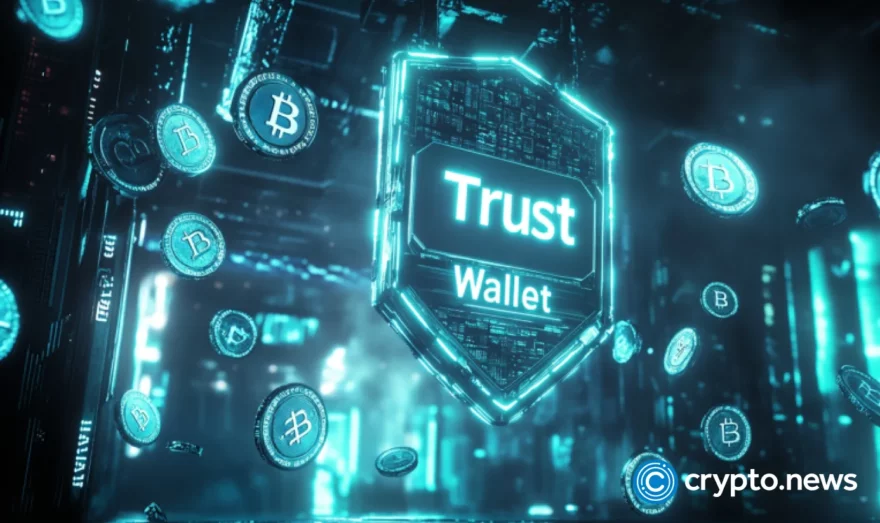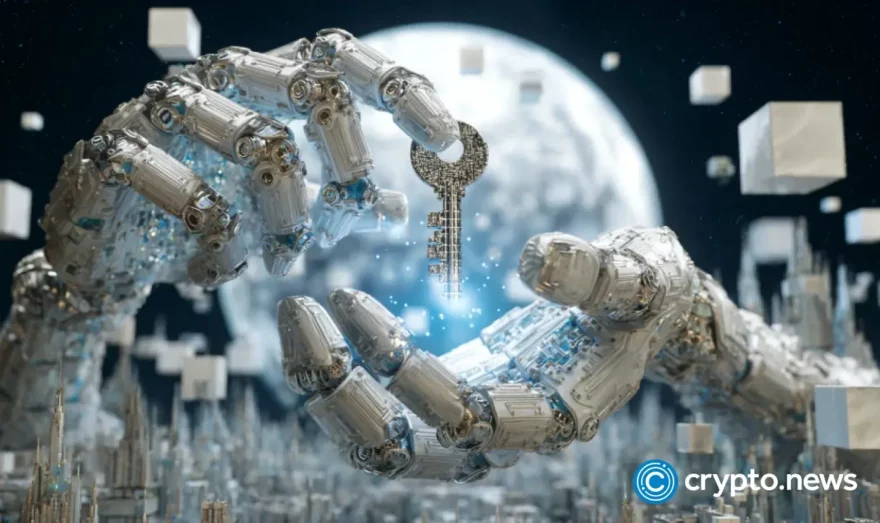Interview with Thaer Khawaja, Lead Developer of the Masari Project

In this exclusive interview, BTCManager speaks to Thaer Khawaja, a Canadian software developer who has been quietly working on a code fork of Monero, known as Masari.
The cryptocurrency first emerged into the limelight when the project submitted a pull request to the Monero main branch for a difficulty adjustment algorithm that would have helped Monero’s recent fork to have been a bit smoother.
Launched in September 2017, in the space of less than a year, the project is gaining traction and attention for its alternative approach to utilizing CryptoNight technology. The volume of the coin has been on an upward path, especially near the end of April, and currently trades on small, lesser-known exchanges. While Monero is translated as money in Esperanto, Masari is one of the words for money from the Arabic language.
Some key features of the project include; a mandatory ring size of 12 versus Monero’s seven which cannot be changed by the user, an improved difficulty adjustment algorithm, and the use of ‘Fluffy blocks’ by default.
In what follows, BTCManager speaks to Khawaja about the history of the project, his thoughts on the recent happenings related to Monero regarding ASICs and regulation, and what we can expect in the future for Masari.
Thaer, Tell Us About Your Background and How You Got into Cryptocurrency?
My software background is in distributed systems.
I’ve been aware of and fascinated by cryptocurrency through Bitcoin since 2011/2012, but haven’t really gotten into it until mid-2017 with Masari.
How Did You Get Started with Masari? Why Did You Decide to Create a New Blockchain/Cryptocurrency and Not Work on Monero Instead?
Masari got started from me wanting to understand Monero‘s inner workings, as I wanted to understand how its ring signatures and masked transaction amounts worked.
After reading the corresponding whitepapers, I ended up tinkering with Monero’s code and got to a point where I wanted to experiment with new protocol ideas and decided to start Masari with the work I’ve already done on the code.
“With what’s currently on the roadmap, it’s incompatible with Monero’s roadmap as most of its objectives lead to a different path. However, compatible work has been and will continue to be contributed upstream to Monero whenever possible.”
Who Else is Working on Masari?
Initially, when I started I wanted the project to be core team oriented; my targets were working full-time jobs, so it has turned into a community-oriented project.
Those working on Masari are cryptochangements, who has been really helpful for full upstream merge of monero updates, Gnock who currently works on our web wallet, Jeff (BazookaJeff) who has been heading marketing for the project, and LoDoCrypto who has been leading communications.
How does Masari Differentiate Itself from Monero or Other CryptoNight (CN) Coins like AEON?
Masari differentiates itself by focusing development into on-chain scalability solutions.
Masari currently, however, is mostly known for its difficulty algorithm developments, as it was crucial for the network’s survival against malicious attacks and has subsequently saved many other CryptoNight coins from suffering fates similar to past projects.
Claims are Floating Around that Masari was Pre-mined, Can You Clarify the Situation?
On a technical level, there was no pre-mine; I define a premine to mean coins mined from the genesis block pointed to an address that they own.
There was an unintentional four-day discrepancy between an announcement on Bitcointalk and when the network was launched, during which I was mining, as well as others, known and unknown, as the source was publicly available on GitHub.
Compared with other projects that have a ten percent or more pre-mine, with an intentional withholding of the network for up to a month or more, Masari’s case is arguably a non-issue.
I’ve been transparent regarding the coins I’ve mined during that time period, where it has gotten me approximately 100,000 MSR which is roughly 0.5 percent of the total supply. This amount has been transferred to the donation wallet as a project budget to incentivize initiatives (such as developer bounties).
Update: As pointed out by AEON/Monero developer ‘Stoffu Noether,’ the coins amassed during the network launch date and the Bitcointalk announcement would still be considered a pre-mine. Noether pointed to troubles with Sumokoin relating to mismanagement and negative aspects associated with the handling of pre-mined coins as a warning. The stance from Masari was updated thereafter to acknowledge that the coins held by the Masari team do, in fact, amount to a 0.5 percent pre-mine.
What are the Biggest Obstacles Facing Young Coins/Communities like Masari as You See It?
Malicious network attacks and market manipulation, as well as funding, are probably the biggest challenges that a young cryptocurrency community would face.
What Are Your Thoughts on Other CN/Monero Forks?
Having an ecosystem of multiple CN/Monero forks will hopefully be a good thing in the future, as some of these will be making significant contributions to the cryptocurrency space. However, chain forks (enabling “airdrops”) are typically a threat on the parent project (such as MoneroV or Monero Classic) as it reduces the security of the parent network when it comes to ring analysis.
“Masari is at least partially responsible for this recent boom of Monero forks, as many projects early on have adopted my implementation of a difficulty algorithm that helped secure networks from malicious mining. This typically happens when a project first hits an exchange, when profitability incentivizes such behavior.”
When we first came across this problem, we initially adopted Sumokoin’s algorithm, but that became insufficient due to technical flaws in the design. This enabled to develop my own solution for Masari, using the WWHM algorithm designed by zawy who is credited with helping many projects on this matter, most notable Bitcoin Cash when they first forked off BTC.
The history through difficulty algorithms for Masari can be found on Medium, and it’s great to have been part of the R&D that led to the algorithms being used today, where most new CN/Monero forks are using the latest renditions (currently LWMA). This has been a significant contributor to why we have so many software forks today, and I believe over time this will create an ecosystem around Monero, just like with Bitcoin, where different projects pursue different agendas that bring to light new protocols (i.e., Lightning Network, zk-SNARKs, and zk-STARKs, etc.).
What are Your Thoughts on the Fork to Kick ASICs Off the Network? What Do You Say to Those Critics that it is a ‘Band-aid Solution’ and it a Futile Exercise?
Kicking ASICs off with a PoW variant is definitely a “band-aid solution,” and mostly stemmed from the secretive centralized mining that occurred from the entities that developed those ASICs.
Since it’s arguable that ASICs are inevitable, centralization is the core concern to tackle, and it’s reasonable to seek a long-term solution that would use easily accessible ASICs that would be just as available as regular GPUs, which promotes decentralization.
One way to do this is to propose an algorithm some number of years in the future, which will enable fair and transparent competition leading up to that point.
In that context, the six-month tweaks would mostly be a short-term measure in the meantime to ensure that no centralized secretive mining is taking place, which threatens the network with 51 percent attacks.
As You May Have Heard, the Japanese FSA is Applying Pressure on Exchanges to Delist Privacy Coins? Do You Think Monero/Masari are Ready for these Regulatory Challenges?
I see it as monero is where bitcoin was in 2011/2012. Both were labeled the coin for the darknet and banned by multiple countries. Back then, the government-sponsored response didn’t really deter anyone. While the privacy features might be seen in a negative light, it’s fundamental for day-to-day use.
Bitcoin’s ledger is equivalent to a bank account where everybody can see your transactions, but unable to spend using your money.
While a privacy coin like Monero allows “regular banking” features where one can trust that their transactions are private, while still allowing auditing to occur which is compliant with whatever regulations that need to be met.
That’s why I feel like Japan is mostly overreacting; it is something that will be looked at in the rear-view mirror and will not affect the long-term success of coins like Masari and Monero.
Can you Speak a Bit About the Recent Client-side Web Wallet, How Does it Differ to MyMonero?
They’re fairly similar, though the new wallet is client-side and more comparable to the more recent XMRWallet. The client-side aspect helps increase security, as no sensitive keys would hit the corresponding servers and less trust is needed as no spend keys are being trusted with a third party.
Being client-side is a more significant hurdle for CN currencies, since “mixing” is needed to create the ring signatures required, and needs transactions from the blockchain other than your own, where Gnock has been addressing this by making all sensitive processes client-side.
Next initiatives will be to make this cross-platform and mobile friendly, where the end user doesn’t need to worry about securing their seed in a decentralized way while being able to use the network effectively. This will in the future include the feature to be able to send to user ids rather than addresses.
For higher level security, we will be including Ledger support, and this two-pronged approach will address both the layman end-user and the power user.
Can You Explain What ‘Uncle Mining’ is to our Less Technical Readers and How it Relates to Masari?
Uncle mining is basically a way to secure the network by adding “weight” to it, while at the same time rewarding miners that would’ve otherwise lost their mined blocks to somebody else on the network.
This enhanced weight enables the network to safely and securely have block times of one minute or less, without risking consensus failures.
Can You Talk a bit about BlockTree and Sharding for our Less Technical Readers?
The BlockTree protocol is a way to partition/shard the network to allow for multiple blocks to be mined at the same time.
“The BlockTree protocol proposal unique to Masari that would enable VISA-scale transaction throughput, and would hopefully pave the way for on-chain scalability initiatives in the cryptocurrency space.”
Where Do You see the Project Heading in the Next 12 Months or so?
I foresee the Masari community getting bigger and more self-sufficient in the coming months. The major challenges will be the protocols being proposed, as they’re consensus critical, where the value added will be open to continuous debate, discussion, and improvements.
For core development, we hope to have an Uncle Mining protocol in place by the end of 2018. Masari’s community has already met one of the other milestones for web wallets, with ongoing development to making it easy to use and mom-friendly as we make cross-platform clients for mobile devices.
This article was updated May 30.
Disclaimer: The author has a small holding of multiple CryptoNight coins, including Masari, as well as other altcoins. Please do not take this interview as investment advice and do your own research before trading/investing in cryptocurrencies.












